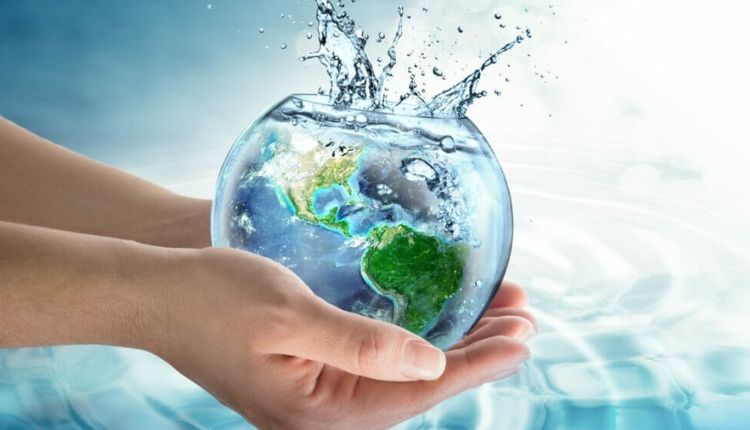Your home’s plumbing quietly wastes enough water each year to fill a small swimming pool. Across the US, Canada, households flush away billions of gallons of fresh water through inefficient habits and old fixtures. It’s a silent drain on your wallet and the planet’s resources. But here’s the good news. You can turn things around with eco-friendly plumbing practices that are straightforward and effective.
These changes let you slash water use, trim utility bills, and support a healthier environment. Think about it. A few tweaks in your daily routine or smart upgrades to your setup can make a real difference. In this post, we’ll explore the benefits that motivate homeowners like you to act. You’ll get practical steps for everyday habits and guidance on lasting improvements. Whether you’re a busy parent or a retiree aiming to simplify life, these ideas fit right in. Let’s dive into how small actions build a greener home without hassle.
Why Eco-Friendly Plumbing Saves You Money and Helps the Planet
Switching to eco-friendly plumbing pays off in clear ways. It cuts your water bill and eases the strain on natural resources. The EPA reports that the average American family uses about 300 gallons of water per day. That’s a lot, but green practices can reduce it by up to 50 percent. For instance, one household saved $200 yearly just by installing low-flow devices. Plus, many cities offer rebates or tax credits for these upgrades, which sweeten the deal.
These benefits go beyond dollars. They help combat climate change by preserving water supplies and lowering energy use for heating and treatment. Water scarcity affects one in three people globally, and simple home changes contribute to the solution. You feel good knowing your efforts matter on a bigger scale.
Cut Down on Water Waste for Lower Bills
Old pipes and fixtures let water slip away unnoticed. A low-flow showerhead, for example, uses half the water of standard ones while keeping pressure strong. Families often see bills drop by $100 or more annually. Start with a quick audit: Check your meter when no water runs. If it moves, you’ve got a hidden leak wasting money.
Real savings add up fast. Take the Smith family in California. They fixed a dripping faucet and added aerators, saving 5,000 gallons a year. That’s like removing 10 trash bags of plastic from oceans in water terms. Track your usage with a simple app or monthly bill review to spot progress.
Protect the Environment with Sustainable Habits
Green plumbing keeps pollutants out of rivers and lakes. Wastewater treatment plants use energy and chemicals that harm ecosystems when overworked. By using less water, you reduce that load and protect fish habitats and clean drinking sources.
Freshwater makes up just 3 percent of Earth’s water, and demand grows. Your habits help maintain supplies for future generations. Consider how a conserved gallon supports wetlands that filter air and store carbon. It’s a chain reaction: Less waste means healthier soil, plants, and communities nearby.
Simple Daily Practices to Make Your Plumbing Greener
You don’t need fancy tools to start. Everyday tweaks in how you use water build strong habits over time. These steps fit into busy schedules and show quick results. They cost little upfront but deliver big on savings and impact.
Focus on consistency. Short showers save more than you think, and full-load dishwashing beats hand rinsing. Each practice has upsides like lower bills and downsides like a slight learning curve. Pick what suits your home best.
Fix Leaks and Drips Right Away
A single faucet drip wastes 3,000 gallons yearly, enough to fill a hot tub. That’s $30 down the drain in water costs alone. Spot leaks by listening for drips or checking under sinks for wet spots.
Repair them yourself with a wrench and washer kit, often in under 30 minutes. If it’s a bigger issue, call Irvine plumbers to avoid water damage. The return on effort is huge: One fix can pay for itself in months and prevent mold growth.
Adopt Water-Smart Routines in the Kitchen and Bathroom
In the kitchen, wait for full loads in your dishwasher to avoid partial runs that waste 20 gallons each time. Scrap food into the trash or compost instead of rinsing plates. It cuts water use without sacrificing clean dishes.
Bathrooms offer easy wins too. Install aerators on taps for $5; they mix air with water to maintain flow while using 30 percent less. Collect shower warm-up water in a bucket for plants outside. Make it a family game: Who can shower in five minutes? These routines turn chores into shared goals and build lasting awareness.
Upgrade to Eco-Friendly Fixtures and Systems for Lasting Change
For deeper impact, consider swaps that last years. Low-flow toilets and efficient pipes transform your home’s water system. They might cost more at first, but rebates often cover half, and they boost home value.
In 2025, options like smart sensors and recycled materials make upgrades appealing. Installation varies from DIY to pro help, depending on your skills. These choices future-proof your space against rising water rates.
Pick Low-Flow Toilets and Showers That Work Great
Look for WaterSense labels from the EPA; they guarantee 20 percent less water use without weak flushes. A dual-flush toilet lets you choose 0.8 or 1.6 gallons per flush, saving 4,000 gallons yearly for a family of four.
Retrofit showerheads screw on in seconds and cost $20. Sarah from Texas shared how hers kept her morning routine intact but halved her bill. Compare models online for flow rates around 1.75 gallons per minute. They clean well and feel luxurious, proving efficiency doesn’t mean compromise.
Explore Greywater Recycling for Smart Water Reuse
Greywater from sinks and showers reuses “lightly soiled” water for gardens or toilets. Basic systems filter and redirect it, cutting outdoor use by 50 percent. In the US, check local codes; many states allow simple setups for irrigation.
Start DIY with a diverter kit under $100 to send laundry water to plants. It needs regular cleaning to prevent clogs from soap buildup. One homeowner in Arizona waters her yard this way, saving 10,000 gallons a summer. It’s practical for dry areas and adds a layer of self-sufficiency.
In wrapping up, eco-friendly plumbing practices reduce waste, lower costs, and nurture the environment. From fixing leaks to installing low-flow fixtures, these steps create a home that’s kind to your budget and the world. Start small: Pick one tip, like a quick leak check, and try it this week. Share your wins in the comments; your story might inspire a neighbor. Together, we build greener spaces one drop at a time.






